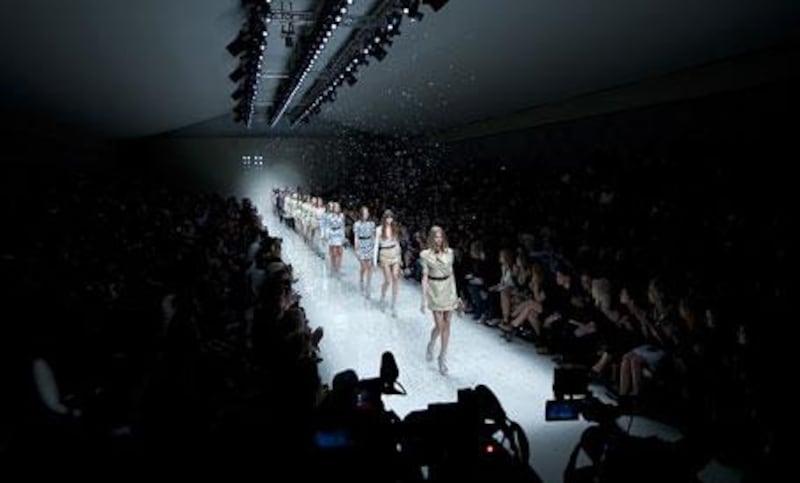Tonight, at around 8pm, Burberry Prorsum will broadcast its autumn/winter 2010/11 catwalk show live in 3D from its London Fashion Week location to Dubai, New York, Los Angeles, Paris and Tokyo. A bevy of VIPs from the Middle East and India will attend the Dubai event, held at The Address hotel in Dubai Mall, among whom will be six women lucky enough to have been dressed by Burberry Prorsum. The rest will be rocking their most fashion-forward frocks, ready for the post-event party. The screening takes place in a room designed by the brand's chief creative officer Christopher Bailey (though, alas, he didn't have time to design special Burberry 3D glasses - apparently they will be the same as the Avatar ones).
It's pretty big stuff, both for fashion and for Dubai. This season has already seen a flurry of live streamings online by various designers, including Marc Jacobs and Rodarte in New York, while London Fashion Week has a schedule of more than 40 live broadcasts. One wonders, then, what the future for fashion weeks will be. Already the recession has prompted a trend for downsizing shows, whether into tiny, exclusive salon viewings or mere presentations. This has coincided with an improvement in technology and an increase in social networking usage to create a boom in online fashion activities, from e-tailing to iPhone apps.
Burberry has been at the vanguard of this movement, being one of the first to stream last season on live.burberry.com (and allowing live comments from viewers on Facebook and Twitter). The Art of the Trench website, too, has taken -advantage of social-networking and visual blogging trends, inviting viewers to submit their own classic trench coat photographs. For one of the world's oldest fashion brands, this is remarkably forward-thinking, and symptomatic of the constant -reworking of tradition that characterises Bailey's collections for Burberry Prorsum. "Burberry is a 154-year-old company but we have a very young, dynamic attitude and energy," he says. "Digital technology is such a fundamental part of everything we do. It is part of our culture and the way we communicate. We are always exploring all the different ways to make something more exciting or better experience for a consumer or employee, through technology." There is, of course, a risk that fashion brands are making a rod for their own backs. By democratising access to events that were formerly reserved for press, buyers and the odd special customer, the danger is that they inspire fashion fatigue in a public who have seen the clothes that will be in the shops a whole six months ahead. Bailey, though, sees only opportunity here. "The internet and social media allow you to add all these extra dimensions," he says. "Every single lookbook is digital now and when we shoot these or host an event, we capture them in film as well as photos. We might do an interview with the model we use, or play a song from the musician in our campaign. When you are looking at the images it gives you a much broader insight into the brand and how we are thinking. You get the emotion behind the clothes because you can elaborate on the story and the people behind it." Yet having been ahead of the streaming game already, it falls to the British brand to maintain the momentum with ever-more-exciting ideas, and Burberry could not have picked a better time for using 3D, with Avatar fever still running high. Moreover, Burberry, like -Lacoste, which showed a presentation of its New York show by Christophe Lemaire in Dubai last week, is running against the pack and bringing an -element of exclusivity to an inherently democratic medium by hosting an invitation-only event in just a few chosen cities. This is a wise move in light of the brand's previous experiments in popularity. (Think -chav-check baseball caps and so on). And this is where we are reminded that Burberry Prorsum is a very different proposition to the Burberry of Britain's high streets. Over the last few years, Bailey has quietly used the high-fashion branch of the label to push international style directions in a way that has been arguably as influential as Marc Jacobs, not only rescuing the brand from eternal naffness but also making it a recession-defying success. And as for the UAE? Well, while Burberry declined to comment on the specific choice of Dubai, saying each of the five cities was very important to them, it certainly feels like a vote of confidence, both in the -country's economic potential and in its status as a place that enjoys and understands fashion, rather than merely consuming labels. We may not be able to visit Pandora (and how distraught we are), but we can certainly stake a claim in Planet Burberry. gchamp@thenational.ae





